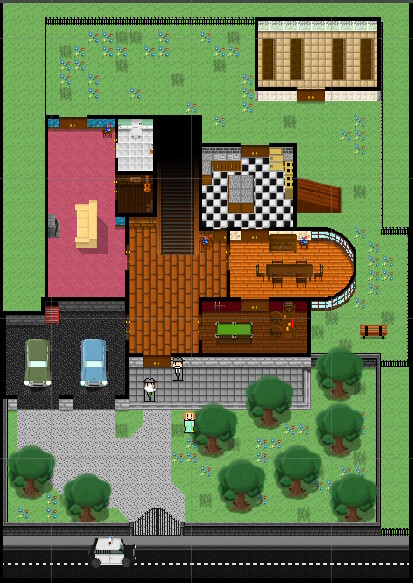The Adventures of Detective Badgers
Summary
The Adventures of Detective Badgers is a thrilling mansion murder mystery game based on the popular "Cluedo". The game takes place in the 1800s and puts the player in the aftermath of a mansion party gone wrong, the player will have explore and face multiple puzzles to get the truth. Who committed the act, where did it take place, and with what object?
The player is to walk in the shoes of the well experienced Detective Badgers, accompanied by his trusted partner Detective Robert.
Pre-Production
For the pre-production to this project, I had decided I wanted to break this down into 3 separate stages.
1. Gameplay
The whole idea for the gameplay was to essentially re-create the feeling of "Cluedo" but in a digital environment.
I had broken the original gameplay down into some specific points:
- The killer, the weapon and the room are randomly chosen every game to give the user a fresh experience in each playthrough. (otherwise known as a "Rogue-like" mechanic)
- The player may interact with objects and people to play puzzles, inspect objects, find clues, interrogate suspects, etc. This will help the user get more immersed into the game, thereby creating a tether between the gameplay and the player.
- We want our characters voiced to create that extra layer of immersion and give them more personality, this will allow the player to create bonds with characters and feel emotions such as betrayal or relief when they're deemed the murderer or not.
- The detective work was to have a similar feel to that of escape rooms. (Inspect fairly normal objects to find clues or a puzzle game, other things like locked doors locked behind progression walls, etc.)
- Detective Robert (Detective Badger's partner) would occasionally give the player a hint to prevent them from getting stuck or frustrated on a particularly hard puzzle.
With all of these defined, we had to find a method of tying these together to create a rich and satisfying gameplay loop.
2. Artstyle
We had started developing our art style by brain storming some character designs. We wanted something simple yet compelling and were hugely inspired by a few pixel art games such as "Pokemon", as well as some fan-made styles for popular titles like "Dragon Ball".
Although, to begin with game assets, I first had to come up with some general ideas for the characters and give them some character before adapting them.
2.1. Detective Badgers
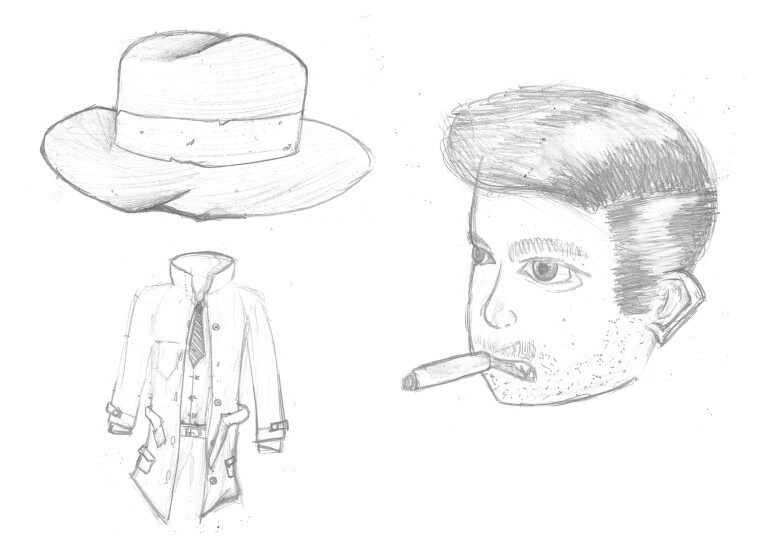
For Detective Badgers, I wanted the character to be on the younger side. This drove me to giving him fairly dark hair and some stubble.
The character was then given a dark grey trench coat with a green tie underneath as well as a fedora with a green band to match his tie.
2.2. Other characters
This was all the same for the party guests, so the same process was followed.
Characters:
- Linda the maid: Seductive, has something for the master of the house.
- Malcolm the problemed child: Snob, Crybaby, Throws frequent tantrums.
- Christine the mother of Malcolm: Snob, Careless, Bad at parenting.
- Christopher the trader: Rich, Rude, Only cares for his business and money.
- Richard the journalist: Wants the best story, will do anything to get it.
- Margret the Florist: Crazy, Loves flowers.
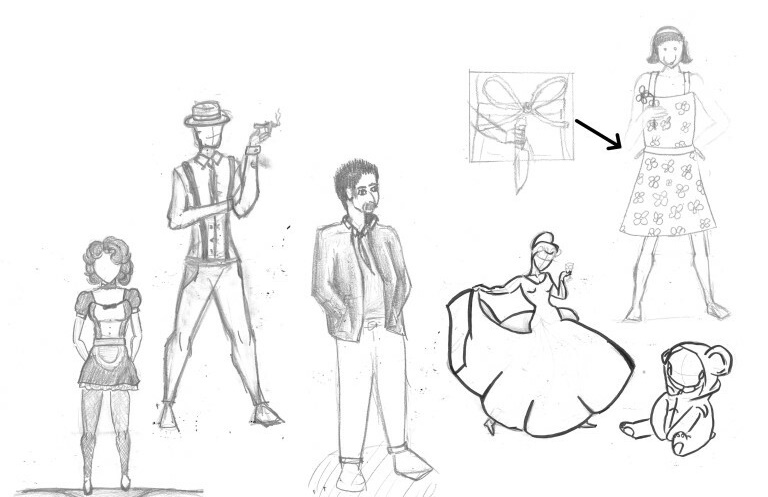
With the base of our characters created, I went ahead and applied the same style and shape to all following characters with some help from Ben Emdon. Although Dylan Barlow and Detective Robert weren't concepted, we already knew we wanted the same style for Robert as Detective Badgers except, with a grey band and tie as well as slightly different coloured hair and Dylan Barlow was based of a person named Dylan Ferro.
2.3. Environment
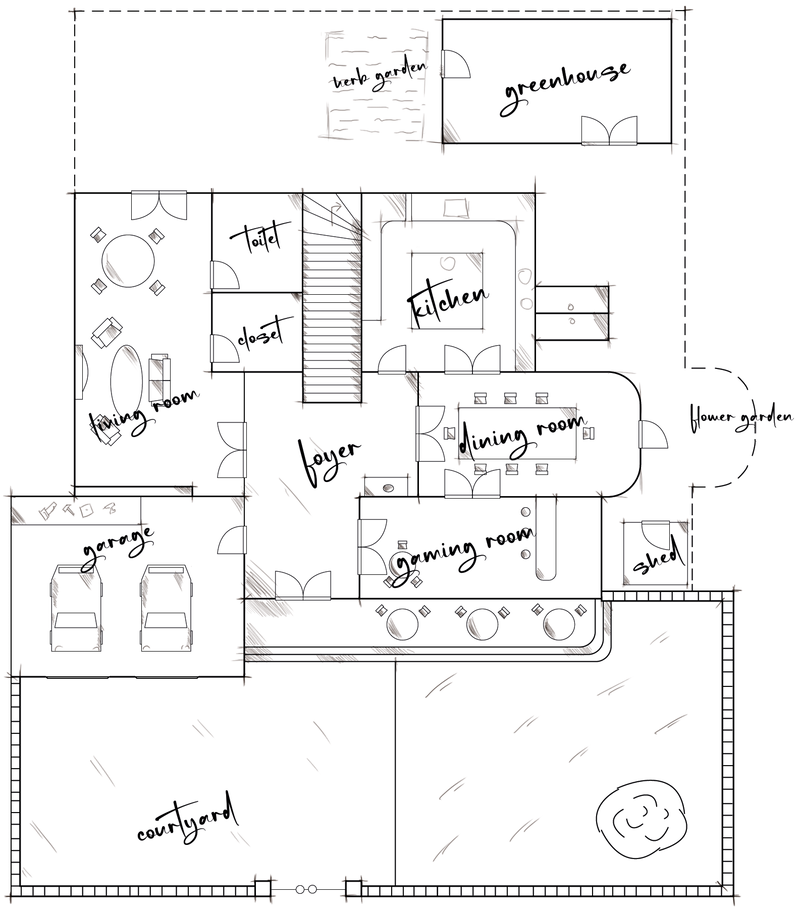
Now that we had concepted our characters, we needed to design a map for the game, we had previously determined that the game would take place in a house party within a mansion. We knew from previous discussions that we wanted to have the mansion contain a few types of rooms:
- Games room
- Kitchen
- Dining room
- Living room
- Storage closet(s)
- Bathroom(s)
- Grand staircase
- Foyer
- Garage
- Bedroom(s)
- Greenhouse
This was the bare minimum for us.
So we went head first into sketching up ideas for this mansion and the layout. After many failed attempts, we had settled with this
3. Vision for product
3.1. Target Audience
We were committed to building a game that was inclusive and respectful of all players, regardless of their background or experience level. We believed that by creating a diverse and compelling world, we could foster a sense of curiosity and empathy among our players, and help them to see the world in new and meaningful ways.
Overall, our vision was to create a single player game that was not only enjoyable and engaging for teenagers, but also promotes their personal growth and sense of self.
development
1. Detective Badgers
I had started throwing ideas onto a canvas until I had come up with this
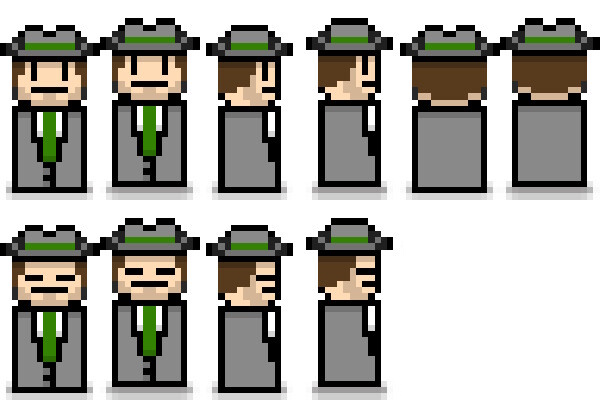
2. Other characters
With the base of our characters created, I went ahead and applied the same style and shape to all following characters with some help from Ben Emdon. Although Dylan Barlow and Detective Robert weren't concepted, we already knew we wanted the same style for Robert as Detective Badgers except, with a grey band and tie as well as slightly different coloured hair and Dylan Barlow was based of a person named Dylan Ferro.

3. Environment
Now that we had a basic art vision for the game with some examples, we decided to try our hand at creating some sprites to create a room, starting with the Games room.
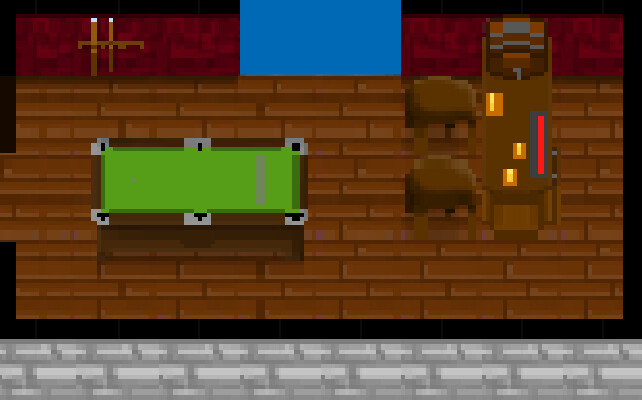
With this, we were confident and decided to leap at creating the assets for the rest of the mansion and setup an asset pipeline for the remaining sprites.
- Ben Emdon: Environment/Room Sprites
- William Castella-Bullen: Furniture/Object Sprites
- Tyler Boundy: Quality Control & Final touches
